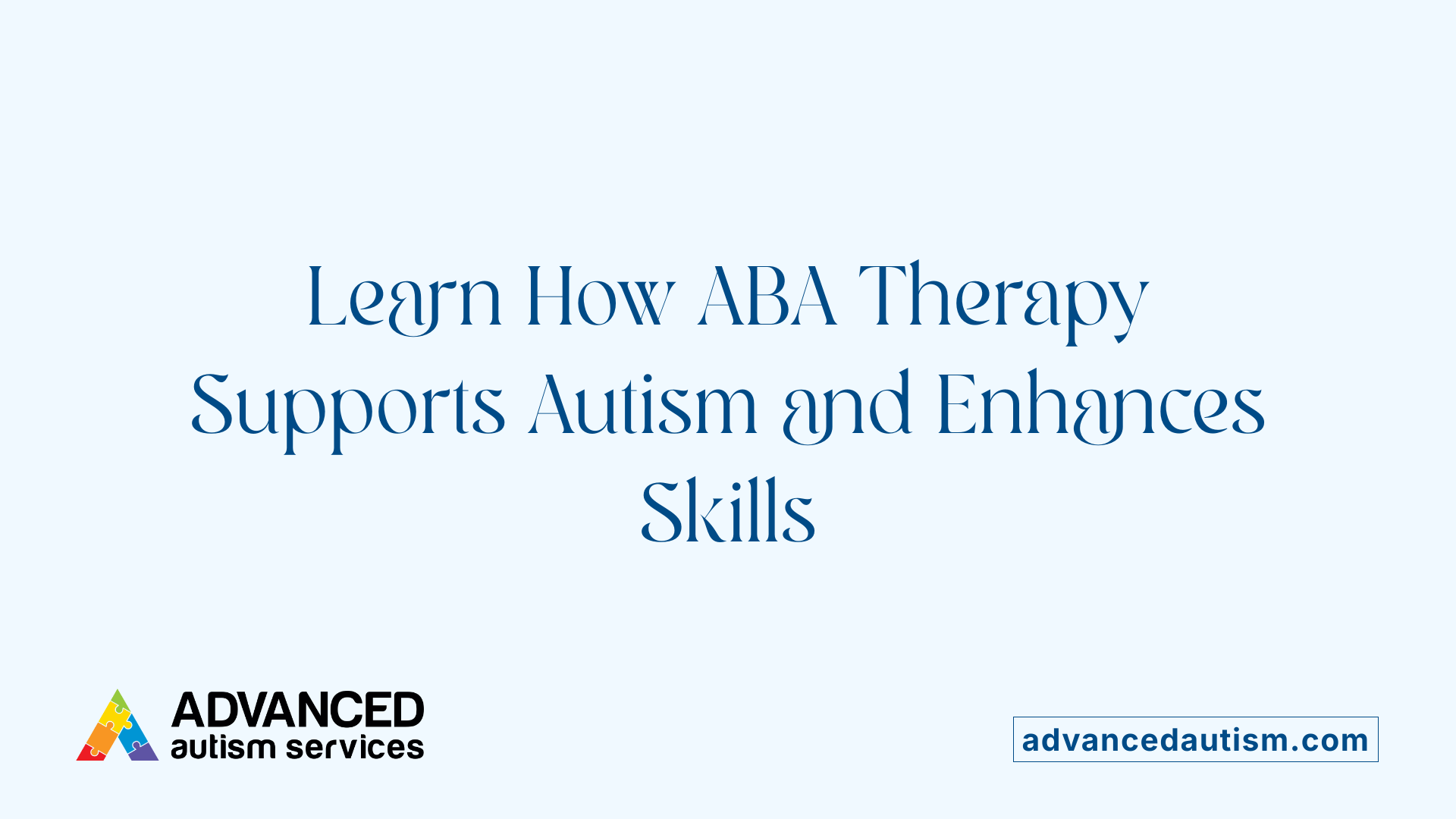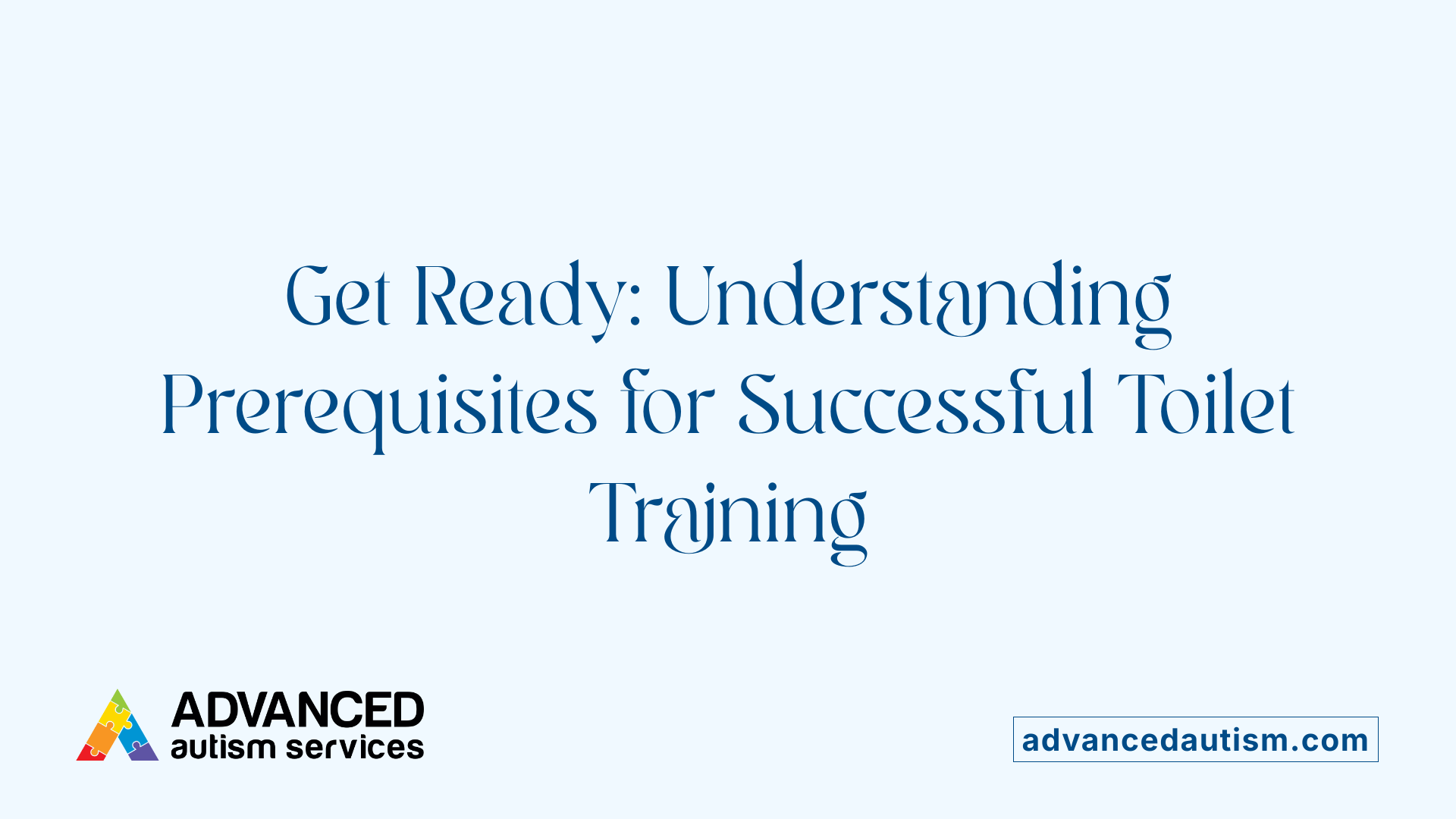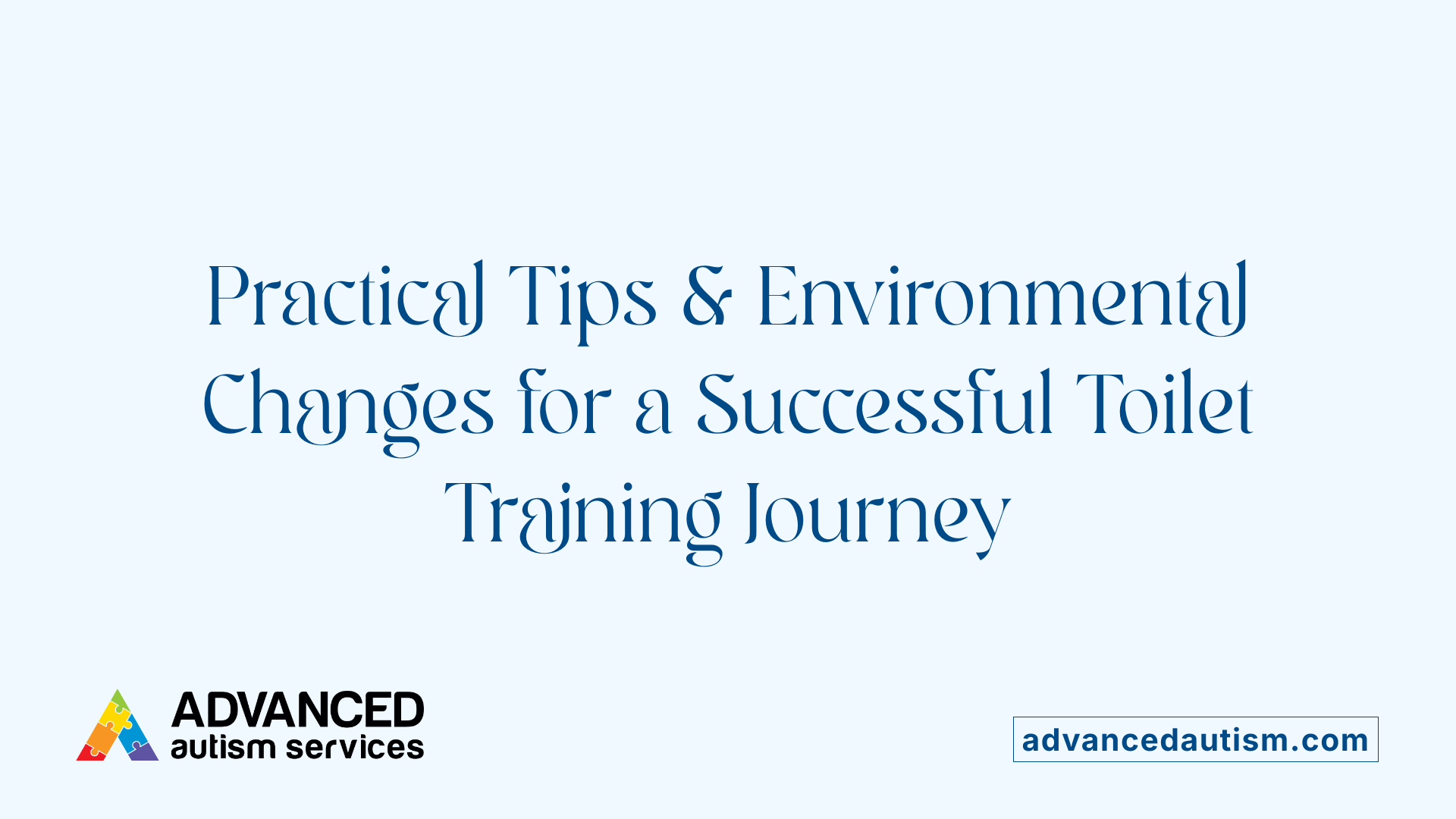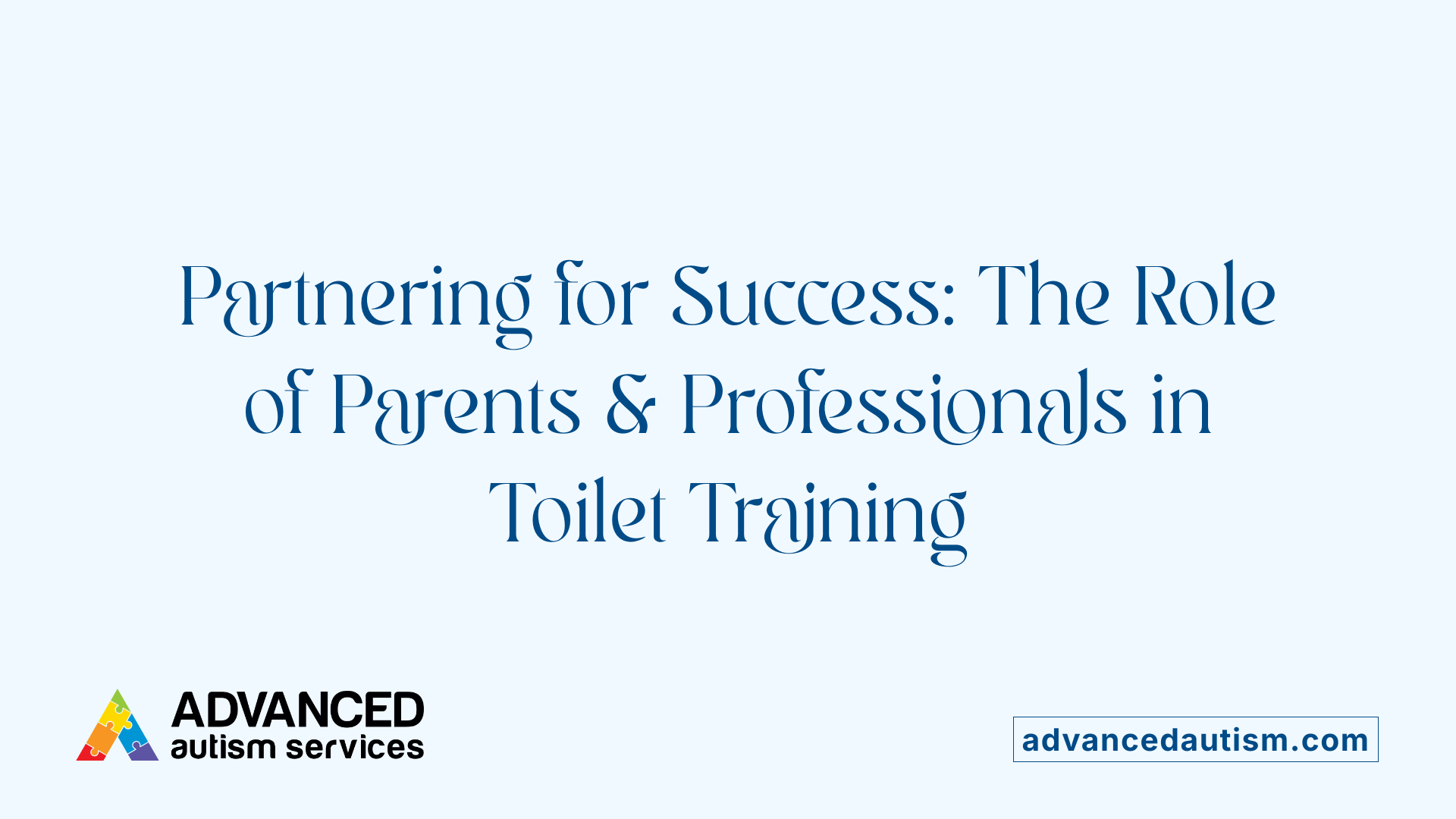Bridging the Gap to Independence Through ABA
Toilet training marks a significant developmental milestone for all children, but for those with autism spectrum disorder (ASD), this process often requires specialized approaches. Applied Behavior Analysis (ABA) therapy offers a structured, evidence-based framework that empowers children with autism to master toilet training successfully. This article explores how ABA techniques facilitate this essential life skill, the prerequisites for readiness, and strategies to overcome common challenges, ultimately promoting independence and social integration.
Understanding ABA Therapy and Its Role in Autism Support

What is Applied Behavior Analysis (ABA) therapy?
Applied Behavior Analysis (ABA) therapy is a scientific approach focused on modifying behavior by encouraging helpful actions and reducing harmful or disruptive ones. Originating in the 1960s, ABA uses methods like positive reinforcement, analyzing antecedents and consequences, and prompting to meet personalized goals. This therapy is flexible and can be delivered in homes, schools, or communities, tailored specifically to the individual's abilities under expert supervision. Research shows that intensive ABA therapy can improve communication, social skills, self-care, and overall daily functioning, especially in children with autism spectrum disorder (ASD).
How does ABA therapy help individuals with autism?
ABA therapy aids individuals with autism by promoting improvements in communication, social interaction, attention, memory, and essential living skills. Techniques such as positive reinforcement, prompting, and natural environment training encourage positive behaviors while minimizing challenges. Structured assessments and personalized plans ensure that therapy is adapted to each person's needs. When started early and conducted intensively, ABA can help children develop skills that often allow them to join mainstream classrooms and increase their independence within the community.
Who typically provides ABA therapy services?
ABA therapy is delivered by trained professionals including Board Certified Behavior Analysts (BCBAs), Assistant Behavior Analysts (BCaBAs), Registered Behavior Technicians (RBTs), and behaviorally trained paraprofessionals. BCBAs, who usually hold a master's degree, design and supervise individualized treatment plans and train caregivers. RBTs and paraprofessionals implement therapy sessions under BCBA supervision, gathering data and applying ABA strategies. These teams work across settings such as clinics, homes, schools, and community programs to support individuals with autism and developmental differences.
What qualifications are required for professionals providing ABA therapy?
Professionals providing ABA therapy must earn certification as a Board Certified Behavior Analyst (BCBA). This involves completing graduate-level coursework in ABA, acquiring 1,500–2,000 hours of supervised fieldwork, and passing a rigorous certification exam. Most BCBAs hold master's degrees in psychology, education, or related fields, and comply with Behavior Analyst Certification Board (BACB) standards. Licensing requirements vary by state but generally include continuing education and adherence to ethical practices. Key skills for these professionals include assessment, skill development, effective reinforcement, data collection, and ongoing progress tracking to ensure evidence-based treatment delivery.
The Foundations of Toilet Training Readiness for Children with Autism

What are the Physical and Behavioral Prerequisites for Toilet Training?
Toilet training for children with autism begins with ensuring several physical and behavioral factors are in place. Physically, the child must have bladder and bowel control, adequate coordination, and fine motor skills to manage clothing and toileting actions. Behavioral readiness includes an interest in personal independence, the ability to follow simple instructions, and a desire for cleanliness. These prerequisites set the stage for successful learning.
How Do Bodily Awareness and Control Influence Readiness?
A critical element in readiness is the child's awareness of their bodily functions. This includes recognizing sensations related to the need to use the toilet and having control over muscle functions involved in urination and defecation. Such bodily awareness is essential for initiating toilet use and responding appropriately.
Why is Understanding the First-Then Contingency Important?
Understanding the first-then contingency means comprehending that one action (first) leads to a subsequent reward or consequence (then). This concept helps children with autism make connections between sitting on the toilet and receiving positive reinforcement afterward. Teaching this contingency fosters motivation and clearer understanding of the toileting process.
What Behavioral Signs Indicate a Child is Ready?
Behavioral readiness signs include the child's willingness to cooperate, the ability to express needs verbally or nonverbally, consistency in daily routines, and responsiveness to positive reinforcement. Observing these signs helps caregivers and therapists decide when to initiate more structured toilet training interventions.
This foundation of readiness—spanning physical control, bodily awareness, and behavioral signs—guides the tailored, patient approach necessary in effective toilet training for children with autism.
ABA Techniques Applied to Toilet Training

Breaking down training into small steps
ABA therapy emphasizes dividing toilet training into manageable tasks. Each step—from walking to the bathroom, sitting on the toilet, to completing the toilet use—is taught individually. This process, known as task analysis, helps children gradually learn complex behaviors by mastering simpler components first.
Positive reinforcement strategies
To encourage success, ABA uses positive reinforcement like verbal praise and tangible rewards such as edible treats. These reinforcers motivate children to repeat desired behaviors, making toilet training a more engaging and rewarding experience.
Prompting and fading methods
Prompting (verbal, physical, or gestural) guides the child through each step initially. Over time, prompts are carefully faded to promote independence, allowing the child to perform toilet routines without assistance.
Use of visual aids and communication
Visual tools such as picture cards support children in expressing the need to use the toilet. Coupled with teaching verbal initiation, these aids improve communication, essential for signaling readiness and success.
Chaining behaviors
ABA links the small steps together through a process called chaining. This approach ensures the child learns to complete the entire toilet routine from start to finish in an organized sequence.
Addressing accidents and setbacks
Accidents are treated neutrally without punishment, reinforcing learning without stress. ABA promotes patience and strategy adjustments when setbacks occur, focusing on monitoring triggers and maintaining a calm response.
Incorporating these ABA techniques creates a structured and individualized approach, increasing the likelihood of successful and independent toilet training for children with autism.
Practical Strategies and Environmental Adaptations

Structured and Scheduled Toileting
A consistent, scheduled toileting routine is essential for effective toilet training in children with autism. Setting regular intervals for toilet visits, such as every 30 to 45 minutes, helps establish predictability and reduce accidents. Incorporating post-meal bathroom trips can further enhance routine consistency, supporting the child's learning and physical readiness.
Desensitization to the Toilet
Getting children comfortable with the toilet environment is a gradual process. Desensitization involves teaching the child to walk to the bathroom, stay inside, and eventually sit on the toilet. Each step should be positively reinforced to build comfort and reduce anxiety. This stepwise approach helps the child adapt physically and emotionally to the toilet setting.
Creating a Comfortable Bathroom Environment
A welcoming bathroom environment encourages participation in toilet training. This can include child-friendly seating adapted to the child's size, engaging visual aids, and quiet activities to help the child feel at ease. Tailoring the space to the child's needs reduces resistance and makes the experience more positive.
Use of Reinforcers Including Edible Treats
Positive reinforcement is critical during toilet training. Highly motivating rewards such as edible treats can encourage the child to try and succeed in toileting tasks. Praise, tangible rewards, and visual positives all help reinforce desired behaviors, increasing motivation and engagement.
Encouraging Independence and Neutral Responses to Accidents
Promoting independence in toilet use includes teaching the child to verbally request the toilet, often supported by picture aids. When accidents occur, parents and caregivers should respond neutrally to avoid negative associations. Encouraging self-management and patience helps solidify learning and supports the child's confidence.
Taking these practical strategies together with environmental adaptations creates a supportive foundation, enhancing success rates and easing the toilet training journey for children with autism.
Parental and Professional Collaboration in Toilet Training

What is the role of parents once the child is ready?
Parents become central to the toilet training process once their child shows readiness, typically when the child can stay dry for 30-45 minutes. At this stage, parents help generalize newly developed skills from training sessions to everyday life. This involves reinforcing toilet use during home and community activities to promote consistency and independence.
How is skill generalization supported at home and in the community?
Generalization means applying toilet training successes in various settings beyond the initial training environment. Parents encourage children to sit on the toilet regularly throughout the day, integrate bathroom routines into daily schedules such as post-meal visits, and support the child in recognizing the need to use the toilet verbally or via visual aids like picture cards.
Why is collaboration with ABA therapists and professionals important?
Working closely with ABA therapists ensures that toilet training strategies are tailored to each child’s unique needs. Professionals guide families on using ABA techniques such as task analysis, prompting, and positive reinforcement. This teamwork helps maintain a structured and effective approach, addressing challenges and adapting methods as the child progresses.
How is progress monitored during toilet training?
Progress is tracked systematically using data sheets, which document successes, accidents, and responses to interventions. This information helps parents and therapists make informed decisions about adjusting schedules, reinforcements, and prompting levels.
Why are patience and consistency crucial in this process?
Toilet training requires consistent routines, neutral reactions to accidents, and steady reinforcement of successes. Patience helps families navigate setbacks without frustration, while consistency builds the child’s confidence and promotes independence over time.
Effective toilet training for children with autism relies on a partnership between parents and professionals, careful observation of readiness signs, and the application of ABA methods with patience and dedication.
Assessing Individual Needs and Challenges
Individualized Assessment Beyond Traditional Indicators
Assessment is a crucial first step in toilet training, especially for children with autism. Unlike typical milestones, readiness must be evaluated based on the child's unique physical, cognitive, and behavioral signs. This means looking beyond age or general expectations and focusing on bladder and bowel control, communication abilities, motor coordination, and interest in independence. By conducting an individualized assessment, therapists and parents can create tailored training plans that suit the child's particular profile.
Health and Physical Considerations
Physical readiness involves more than just staying dry for a certain duration. Factors such as muscle control, fine motor skills needed for clothing management, and overall health conditions must be considered. Some children may face challenges like bowel movement hesitancy, requiring special strategies to encourage comfort and success. Attention to these medical and physical nuances helps avoid discouragement and ensures safe, effective progress.
Addressing Challenges Specific to Bowel Movements and Accidents
Accidents and bowel movement reluctance are common hurdles. A patient, calm approach that avoids punishment is vital. Strategies include monitoring for physical cues of the need to use the toilet and reinforcing dry pants to build confidence. Tailored interventions might involve gradual desensitization to the bathroom environment and specific prompts to encourage bowel movements.
Adaptive Approaches for Communication and Behavior
Since communication varies widely, many children benefit from visual aids, such as pictures or schedules, to signal when it's time to use the toilet. Teaching children to request toilet use verbally or non-verbally encourages independence. Positive reinforcement, including praise and tangible rewards, strengthens motivation. Furthermore, breaking training into small, manageable steps and using prompting with gradual fading aligns with behavioral readiness and helps manage setbacks.
Is ABA therapy suitable for all individuals with autism?
ABA therapy is a widely recognized, evidence-based approach offering structured, effective toilet training. However, it is not one-size-fits-all. Plans are highly personalized by professionals to meet the child's unique needs and strengths. While many children benefit significantly, some concerns have been raised about overly repetitive or conformity-focused methods, prompting modern ABA practices to adopt more naturalistic, child-centered approaches. The suitability of ABA depends on careful assessment and individualized planning to promote the best outcomes.
Expected Outcomes and Benefits of ABA-Based Toilet Training
What outcomes can families expect from ABA therapy?
Families engaging in ABA-based toilet training can expect significant improvements in their child's independence and social skills. ABA therapy focuses on teaching essential daily living skills, such as using the toilet independently, which naturally enhances social interactions and self-sufficiency.
Improved independence and social skills
Through structured teaching methods, children gradually learn to manage toilet routines themselves. This independence boosts confidence and reduces reliance on caregivers, which positively affects social participation and personal dignity.
Increased success rates and reduced accidents
ABA breaks down toilet training into small, manageable steps using prompts and positive reinforcement. This approach raises success rates and reduces accidents quickly. Parents observe fewer setbacks over time as children become more consistent in recognizing body signals and responding appropriately.
Enhancement of communication skills
Toilet training with ABA also promotes communication. Children learn to express their needs verbally or with visual aids to indicate when they need the bathroom. This skill strengthens overall communication, encouraging children to initiate requests and understand instructions related to hygiene.
Long-term benefits to quality of life for children and families
By fostering independence, toilet training under ABA leads to improved quality of life for children and their families. Parents experience less stress, and children gain greater autonomy and social acceptance in multiple settings such as school and community.
Importance of consistency and individualized approach
ABA emphasizes consistent routines and individualized strategies tailored to each child's unique physical, cognitive, and behavioral readiness. This customization ensures better engagement, sustained progress, and lasting skills.
In summary, ABA toilet training offers a structured, effective path to improving toileting skills, supporting functional communication, and enhancing overall independence and well-being for children with autism and their families.
Building Independence One Step at a Time
ABA therapy provides a structured, evidence-based path for children with autism to achieve successful toilet training, an essential step toward greater independence and social participation. By assessing individual readiness, applying proven behavioral techniques, and fostering collaboration between families and professionals, ABA facilitates not only skill acquisition but also confidence and autonomy. While individualized approaches are necessary to accommodate diverse needs, the consistent application of ABA principles can overcome common challenges and lead to meaningful, lasting outcomes for children and their families.
References
- The Ultimate Guide to Toilet Training
- Guide: Simple ABA Techniques for Toilet Training Children ...
- Potty Training Using ABA: A Proven Approach
- Potty Training for Children with Autism using ABA Therapy
- Applied Behavior Analysis (ABA)
- How Much ABA is Enough?
- How to Become an ABA Therapist - School of Education
- How to Become an Applied Behavior Analyst (ABA) Therapist
- How to Become an ABA Therapist | ASU Online
- Questions and answers about ABA



